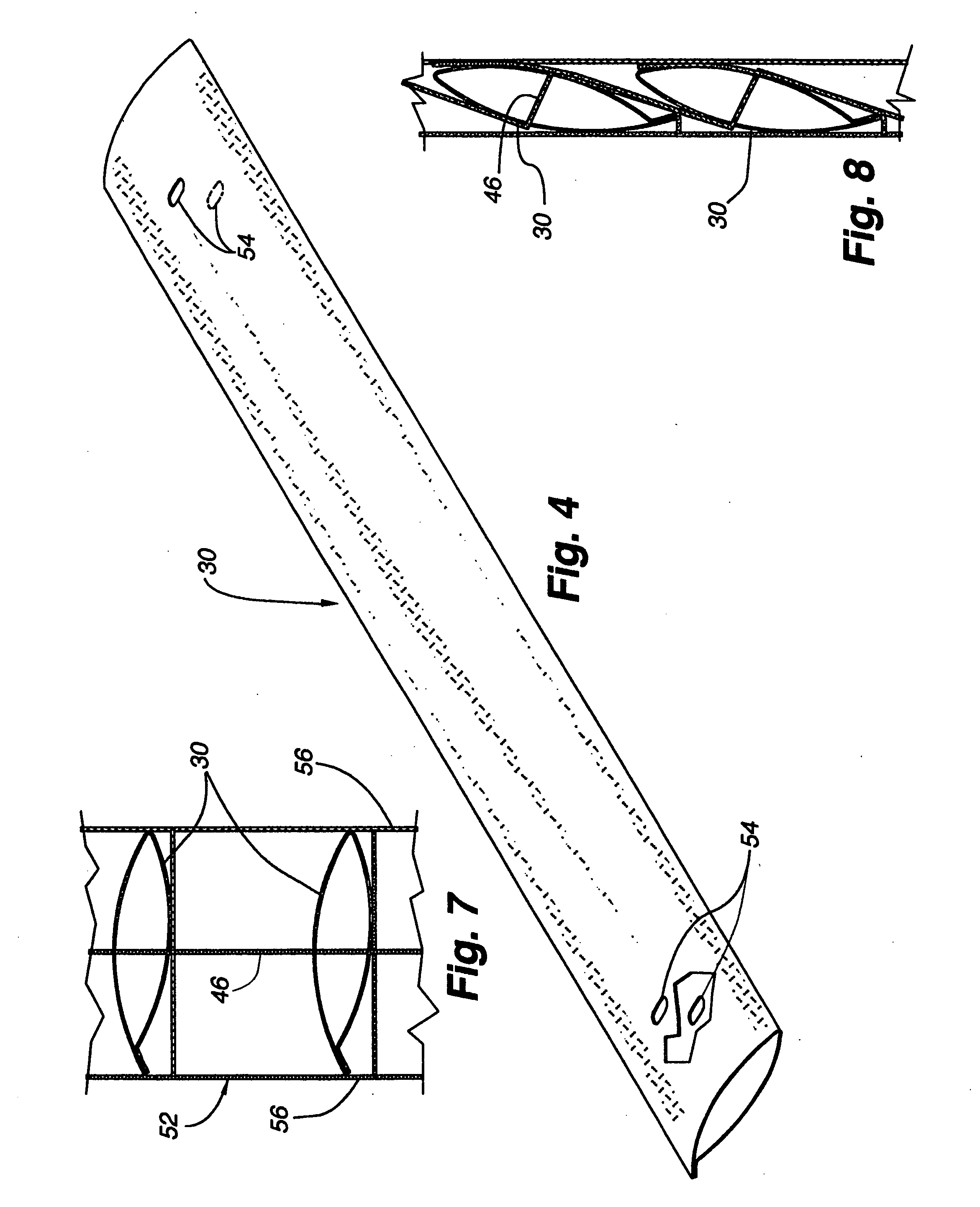Tubular slat for coverings for architectural openings
- Summary
- Abstract
- Description
- Claims
- Application Information
AI Technical Summary
Benefits of technology
Problems solved by technology
Method used
Image
Examples
Embodiment Construction
[0042] The slat or vane 30 for use in a covering for an architectural opening in accordance with the present invention is probably seen best in FIGS. 1-4 to comprise an elongated tubular body 32 having upper and lower outwardly convex side walls 34 and 36, respectively, a folded edge 38 and a secured edge 40. As will be described in more detail later, the slat is formed from a strip of material having opposite ends by folding the material longitudinally along a line proximate the centerline of the strip and securing the free ends together in overlapping relationship. The slat can be cut to any desired length either before or after formation of the tube. An important feature of the invention resides in the material from which the vane is made inasmuch as it is desired that the slat, under normal use conditions, maintains its tubular configuration and is capable of returning to that tubular configuration even after having been deformed or transversely compressed such as in extreme env...
PUM
| Property | Measurement | Unit |
|---|---|---|
| Temperature | aaaaa | aaaaa |
Abstract
Description
Claims
Application Information
 Login to View More
Login to View More - R&D
- Intellectual Property
- Life Sciences
- Materials
- Tech Scout
- Unparalleled Data Quality
- Higher Quality Content
- 60% Fewer Hallucinations
Browse by: Latest US Patents, China's latest patents, Technical Efficacy Thesaurus, Application Domain, Technology Topic, Popular Technical Reports.
© 2025 PatSnap. All rights reserved.Legal|Privacy policy|Modern Slavery Act Transparency Statement|Sitemap|About US| Contact US: help@patsnap.com



